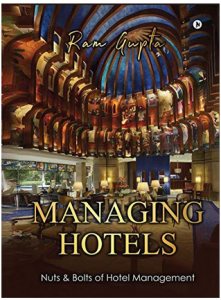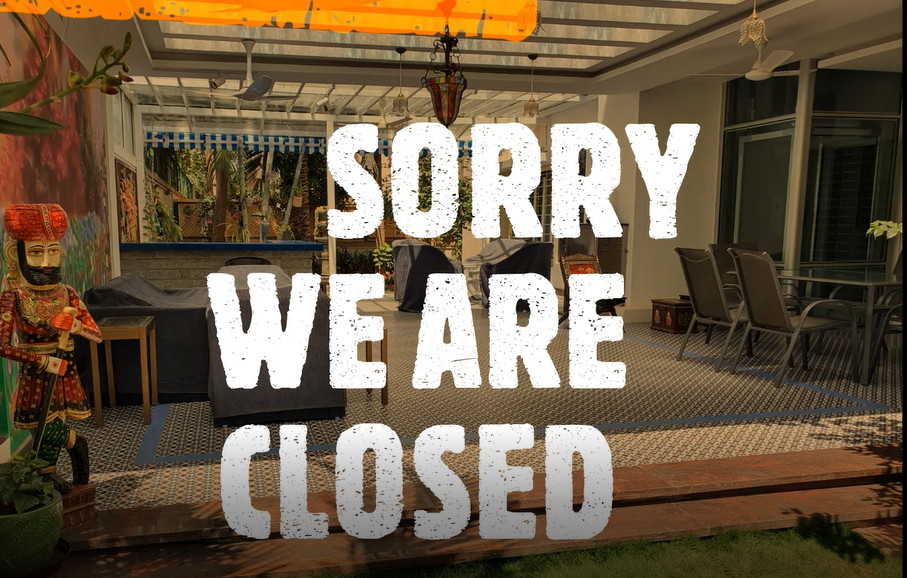In March 2020, the hospitality industry was preparing to launch 2021 as the ‘Visit India Year’ until the global pandemic hit the industry and brought it down to its record low. What followed was an unprecedented problem with the worldwide community of travelers, forced to stay within the bounds of their home. Although factors like relaxation on travel restriction and stay-at-home fatigue of travelers have initiated the path of recovery for leisure and upscale hotels, it still looks quite grim for independent business hotels in urban destinations. Hotels that depended on group businesses and international travelers also have a long way to go for their primary demand market to upsurge. However, the last quarter of 2020 has seen an improvement in the overall performance of hotels in India. The numbers are minuscule and are of no comparison to where they stood in 2019. But it is a start.
How did hotels fare in 2020?
Undoubtedly, 2020 was one of the lowest-performing years of the decade. The occupancy in hotels was vastly impacted by government restrictions and caution on part of travelers, swinging between 27.8% to 34.5% in the first two quarters of the fiscal year. Although the industry started slowly reopening in the last quarter of 2020, showing a slight increase in occupancy at 37.9%, hotels continued to face challenges to keep themselves afloat. The average operating inventory Q4-20 improved to about 85%, but the significant decline in RevPAR Performance of hotels resulted in an industry-wide loss of Rs 90,000 crore in revenue.

In comparison to the previous ten years, India’s hospitality industry in 2019 witnessed one of the largest jumps in Average Daily Rate (ADR) and the growth in revenue per available room (RevPAR). Both of which declined significantly in 2020, standing at -19.1% ADR & -57.8% RevPAR. With the huge losses incurred by hotels across the country, the industry had contracted by 65% in the past year. (Report by ICRA).
How did the ancillary industries cope?
The pandemic has pulled down every segment of the service industry massively and has been resorting to band-aid solutions ever since. The aviation industry had a particularly difficult phase, with multiple safety and hygiene guidelines imposed on air travel as well as floor price regulation by the Government. However, airlines devised their offers to remain in demand with all-inclusive fares, free of cost additional baggage allowance, zero cancellation, free date change, priority check-in on minimal charges, and so on. Despite the increasing demand for domestic travel in the later quarters of 2020, the Covid infected fiscal year FY2021 saw the aviation industry taking a hit of 21,000 crores in revenue loss. The domestic air passenger traffic is rising month on month, with an approximate 77 lakh passengers traveling on domestic routes in March 2021. But the figures still remain at a 33.1% annual decline (Icra report).
On the other hand, most of the stakeholders in the tourism industry had to re-invent themselves, especially those offering international travel services (inbound and outbound alike), shifting their focus to domestic travel for survival. Some operators have utilized this time to revamp their existing products while also working on their brand visibility through digital media, webinars and members-only networking sessions offered by trade associations. A few others have been innovative and explored their option with virtual tours and experiences, bringing in panels of experts for interactive sessions online. While these efforts have helped operators and agencies to remain visible, the conversion in terms of revenue remains at a bare minimum to none. The fiscal year FY2021 inflicted the tourism industry is estimated to have lost over 5 lakh crores in its organised segment alone.
Do upscale hotels and brands have an edge?
There is a gradual growth in demand, particularly in the leisure market, especially with weekend occupancy. A report by Noesis Capital Advisors and Ngage Hospitality Indian Hotels Performance H1 2020-2021 predicts that by Q4 of 2021, the Indian hospitality sector is likely to achieve 2019 occupancy levels. However, the Average Daily Rates will take longer to climb up to the levels. According to another impact assessment report, hotels are expected to reach PreCOVID levels of ADR only by 2023.
Recovering from the blow of 2020 is going to be a huge task for the industry. The recovery growth in the sector is expected to be led by two major segments – upscale leisure hotels and branded economy business hotels. But hotels dependent on group business, international travel and independent, non-affiliated properties will remain vulnerable. A survey by Noesis Capital Advisors conducted during the lockdown in 2020 indicated that 73% of customers showed a willingness to spend an additional 15-20% of the room rate provided their preferred hotel adopts enhanced safety protocols and provides a hygienic environment. Given that these are easily attainable criteria for luxury and upscale hotels, achieving expected levels of room rates will be fast-tracked for these categories.
Is it the same for Independent hotels?
Independent hotels account for 70% of the total available rooms in India. These hotels have also been the worst hit segment within the industry. But the Covid induced agony may not be over yet for independent hoteliers. With mid-economy brand hotels likely to scale down their room rates to improve occupancy levels, independent hotels will face fierce competition in the new evolving market scenario. While product and service upgradation will be all the more important, the constraint in financial resources may become a hindrance for a single owner hotel. Given the low demand added with an increase in operating costs due to additional expenses to maintain safety and hygiene standards. However, this also presents smaller / independent hotels with an opportunity to collaborate with chain hotels with greater visibility in the market. An affiliation with a strong brand will help them to capture future demands. At the same time, this will also take the weight off from the owners in terms of operations.
With vaccine roll-outs gaining traction, a sharp demand recovery is predicted going forward in 2021. Simultaneously, the second wave of Covid-19 has contributed to the ambiguity with lockdowns and travel restrictions imposed in regions that witnessed a rise in the number of Covid positive cases. While I have a very positive thinking for the recovery of industry in the very near future, I will add a word of caution in wake of the looming third wave talk. In destinations where travel restrictions remain completely relaxed, safety protocols still mandate limitations on room sales which is likely to slow down the recovery process further. We have seen hotels resort to social events and weddings to compensate for the losses incurred. Weekend getaways, staycations and emerging concepts like work-from-hotel, workcations and even revenge travel are segments that would help hotels until business picks up pace.
Ram Gupta is a hotel management graduate. He is a certified Hotel Administrator from U.S. and MIH from U.K. He has over 40 years of sound experience in the Hospitality industry in India, Dubai, U.K, Europe and Japan and is well versed with all areas of business including acquisitions, mergers, joint ventures, diversification, strategic planning, development and operations. He has been associated with over two dozen luxury and boutique hotel projects and has launched two hotel chains in India. He is currently an independent hotel consultant and could be contacted at ramgupta@bcgglobal.com. Website: www.bcgglobal.com
HOSPITALITY INDUSTRY BOOKS BY RAM GUPTA


AVAILABLE FROM:-
ALSO ON,-
AMAZON KINDLE, KOBO, GOOGLE PLAY & i BOOKS
BOOK STORES IN INDIA
COFFEE CUP – SECUNDERABAD, CROSSWORD – BANGALORE, PUNE, JAIPUR & NOIDA, GANGARAMS – BANGALORE, HIGGINBOTHAMS – BANGALORE & CHENNAI, MODERN BOOK STORE – TRIVANDRUM, ODYSSE – COIMBATORE, OXFORD – DELHI & KOLKATA, STORY BOOK STORE – KOLKATA, TITLE WAVE – MUMBAI, WRITERS CAFÉ – CHENNAI

